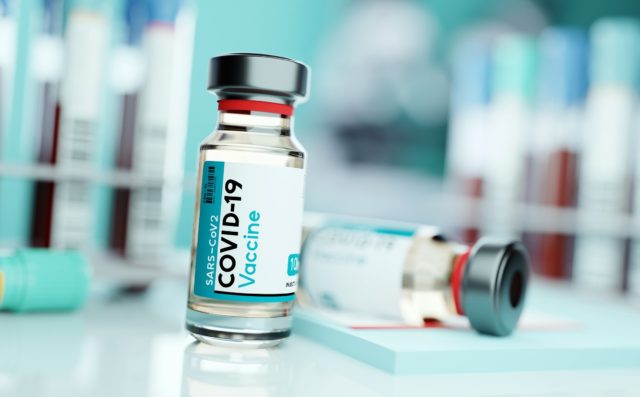
Despite data showing two COVID-19 vaccine doses remain largely effective against severe symptoms, hospitalizations and deaths, the Biden administration is urging booster shots starting this fall to get a jump on the rise in infections among the vaccinated.
The U.S. aims to make a third mRNA dose available to Americans ages 18 and older eight months after their second Pfizer-BioNTech or Moderna shot, health officials said during a White House press briefing Wednesday. The government plans to roll out its program the week of Sept. 20, assuming the boosters pass muster with the FDA and the Centers for Disease Control and Prevention’s (CDC’s) Advisory Committee on Immunization Practices, Surgeon General Vivek Murthy, M.D., said during the conference.
The plan doesn’t include Johnson & Johnson’s viral vector vaccine, but the need for a J&J boost is also “likely,” Murthy said. J&J’s single-dose shot rolled out a little later in the U.S. than Pfizer and Moderna’s vaccines did, he noted. More data are expected “in the coming weeks,” at which point the U.S. will update its plan for J&J vaccine recipients, Murthy said.
Booster eligibility will likely start with healthcare workers, nursing home residents and other seniors, the U.S. Department of Health and Human Services said. Around that same time, the U.S. will kick off efforts to deliver boosters straight to residents of long-term care facilities.
The White House’s booster plan release follows a somewhat confusing back-and-forth between the FDA, the CDC, Moderna and Pfizer. The two vaccine makers sounded the alarm that antibody levels fall over time, but U.S. health officials have asked for more proof that lower antibody counts translate to lower efficacy.
Meanwhile, the FDA last week expanded its authorizations for Pfizer and Moderna’s shots to cover a third dose for people with compromised immune systems.
After looking at data through July and early August from the U.S. and beyond, three points have become clear, CDC Director Rochelle Walensky, M.D., said during Wednesday’s briefing: Vaccine efficacy against infection starts to wane over time; vaccine efficacy against severe disease, hospitalizations and death remains “relatively high”; and vaccines are generally less effective against the delta variant.
Walensky flagged two studies in particular—one from New York and another based on data from the Mayo Clinic. The New York study, which looked at COVID-19 tests and linked them to peoples’ vaccination status using state records, found that efficacy against infection dropped from 92% in May to 80% by July 25.
Meanwhile, data from the Mayo Clinic found that Pfizer’s vaccine efficacy dropped from 76% to 42%, Walensky said. Efficacy for Moderna’s shot fell from 86% to 76% between January and July, when delta had established a foothold in the U.S., she added.
Walensky also cited data from a study of U.S. nursing home residents that found vaccine efficacy slipped from 75% in March to 53% as recently as Aug. 1, 2021. That’s a substantial decline in efficacy against infection “among those who are most vulnerable, including during months where delta was the predominant circulating variant,” Walensky said.
RELATED: Moderna, citing variants and waning immunity, expects COVID-19 boosters to become a fact of life
It’s important to note that the studies Walensky referenced include asymptomatic and mildly symptomatic infections. In their FDA application, Moderna and Pfizer submitted efficacy data on symptomatic COVID. That means the initial efficacy figures reported in Pfizer, Moderna and J&J’s pivotal studies can’t be compared to the efficacy figures Walensky spotlighted Wednesday.
If those phase 3 trials had tested all participants regularly, the efficacy figures would have been inherently lower. Instead, participants were only tested for the virus after certain symptoms cropped up.
Another big unknown is whether vaccinated individuals can develop long COVID-19, which includes symptoms like fatigue, headache and muscle soreness that last for weeks or months after an active infection. The majority of data so far on long-COVID comes from unvaccinated people, The New York Times reported this week. Part and parcel to that line of inquiry is whether a booster dose to prevent milder breakthrough infections could also stave off the risk of long COVID.
Meanwhile, as the U.S. hashes out its booster policy at home, it hasn’t lost track of the rest of the world, coronavirus response coordinator Jeffrey Zients said during the conference. Aside from the 115 million vaccine doses it’s already donated to other countries, plus the 500 million Pfizer doses it plans to share by the first half of 2022, the U.S. aims to do “even more” in the coming weeks to improve global vaccine access.






